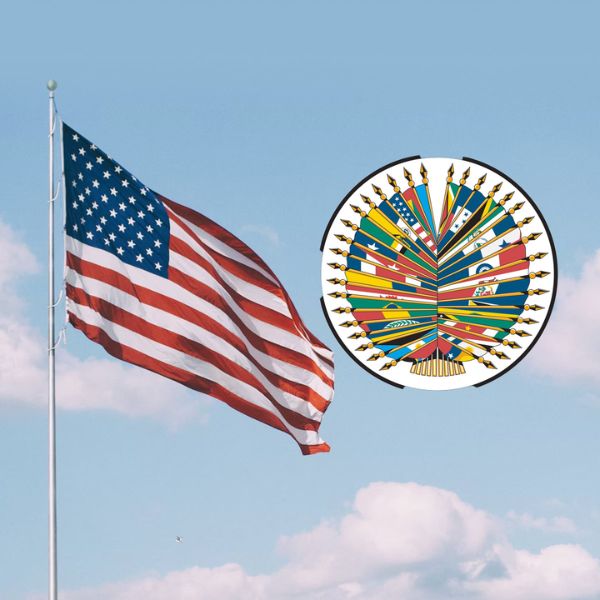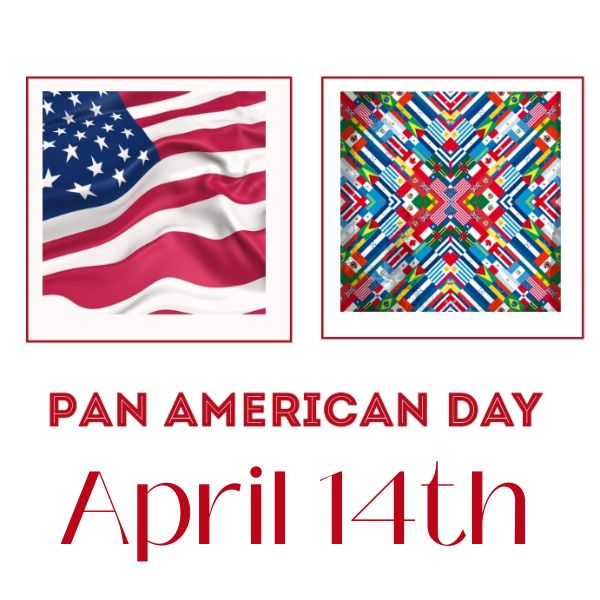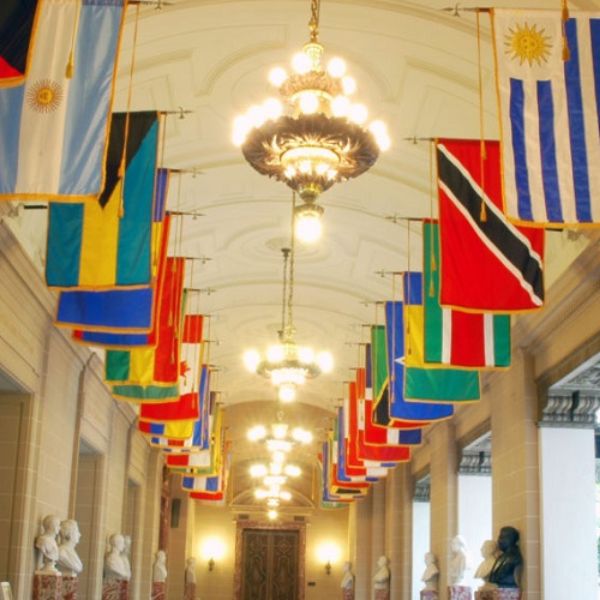Ultimate Guide to Celebrate America's Day - Traditions and Joy Unfold
Table of Contents
America’s Day, often used to describe the Fourth of July, is a celebration of freedom, unity, and national pride. It’s a day filled with fireworks, parades, family gatherings, and a shared appreciation for the country’s journey and values. From honoring history to enjoying summer traditions, this patriotic holiday brings people together in the spirit of independence and joy.
Understanding Pan American Day
Understanding Pan American Day is to delve into the celebration of unity and shared heritage across the Americas. Officially known as Americas Day, this observance is a vibrant homage to the rich tapestry of cultures, histories, and peoples that make up the Western Hemisphere.
From north to south, communities come together to commemorate their collective identity through various activities and reflections. Recognizing this day encourages appreciation for the diverse yet interconnected narratives that span the continent, fostering a spirit of cooperation and mutual respect. As we explore the significance of this day, we embrace a journey through the Americas’ heart and soul.
What Is Pan American Day

Observed every year on April 14th, Pan American Day is a historical and commemorative holiday that unites countries across North, Central and South America. It celebrates the close cultural, commercial and diplomatic relationships shared between nations across the Western Hemisphere. On this day, the diverse countries of the Americas come together to recognize their common bonds, shared values and collective potential through continued partnership.
The origins of Pan American Day go back to 1890 and the First International Conference of American States held in Washington, D.C. This inaugural meeting established the International Union of American Republics, later known as the Pan American Union, as a way to bolster cooperation between independent states in the Americas. Out of a shared desire for stronger hemispheric relations, the delegates at the conference decided to mark April 14th as a symbolic Pan American Day to honor their collaborative spirit.
Over the decades, Pan American Day has grown beyond just an observance into a driving force for advances across the region. As the Pan American Union evolved into the current Organization of American States (OAS), it has played a key role in promoting human rights, defending democracy, enhancing education, improving sustainable development and removing barriers to trade across borders. The annual April 14th celebration serves as an important reminder of just how much further the countries of the Americas can go when they work hand-in-hand.
Throughout the 20th century, Pan American Day reflected broader efforts to align the interests of North, Central and South America. During World War II, solidarity on Pan American Day demonstrated joint resistance to the fascist threat. In the post-war era, leaders leveraged the holiday to strengthen economic, cultural and political ties – such as through the Pan American Highway system. Pan American Day stimulated momentum for establishing regional partnerships like the North American Free Trade Agreement (NAFTA) and Mercosur trade bloc.
In honor of Pan American Day, various educational, artistic and cultural events are held to commemorate hemispheric camaraderie. The OAS Secretary General and dignitaries from across the Americas issue official messages celebrating unity and outlining their shared vision on this day. The UN also recognizes the holiday and what Pan-Americanism represents in bringing the hemisphere together as an influential force on the global stage.
While trade disputes and immigration issues can occasionally strain relations, Pan American Day promotes the idea that cooperation is the cornerstone for advancing mutual interests. With 35 nations and over 1 billion people, the diverse voices of the Americas are strengthened when unified through institutions like the OAS. This Pan American Day and every day, we remember that multilateral partnerships, open dialogue and active collaboration pave the way for prosperity from Canada to Chile and beyond.
When is Pan American Day

Pan American Day is an important historical and commemorative holiday observed annually on April 14th throughout the nations of North, Central and South America. This special day celebrates the close relationships between the countries of the Western Hemisphere and the cooperation promoted by the Pan American Union. But when did this unified celebration first originate? Understanding the background provides insight into how Pan American Day came to represent hemispheric solidarity.
The story of Pan American Day begins in 1889, when the United States invited delegates from across the Americas to attend the First International Conference of American States held in Washington, D.C. the following year. On April 14, 1890, diplomats from 18 countries across the hemisphere convened to discuss stronger intergovernmental ties for economic development, trade relations, arbitration of disputes and communication improvements.
Out of this initial gathering emerged the International Union of American Republics, which was soon renamed the Pan American Union. This new international organization aimed to build closer friendships and commerce between independent American states. As part of these efforts, the delegates at the 1890 conference decided to designate April 14th as Pan American Day to symbolize their movement toward unity and cooperation.
The first Pan American Day was thus celebrated in 1891 as a direct follow-up to that preliminary conference. Since then, Pan American Day celebrations have continued each year on April 14th as a commemoration of the original ideals behind the Pan American Union. This annual holiday provides a chance for reflection on the shared values, common interests and evolving relationships between the sister nations of the Americas.
Over the decades, Pan American Day has been celebrated through various high-profile events. In 1901, Mexico City hosted the Pan American Exposition around April 14th showcasing products and technologies from countries exhibiting pavilions across the region. In 1958, President Eisenhower proclaimed Pan American Week from April 6–14 to promote educational, cultural and commercial exchange programs tied to Pan American Day. And in 1968, the Organization of American States (OAS) arranged for a special ‘Pan American Year’ from April 14, 1967 to April 14, 1968 focused on initiatives to spur hemispheric development.
Now in modern times, April 14th is firmly cemented as Pan American Day on calendars across 35 different countries in the Americas. Governments issue public statements celebrating Pan-Americanism and renewing their commitment to cooperation on this day. The OAS, which evolved out of the original Pan American Union, uses April 14th as an opportunity to assess its mission and progress. Hemispheric unity may be a year-round endeavor, but Pan American Day remains the signature date for celebrating shared identity across the Americas.
The History of Pan American Day

Pan American Day has become a cornerstone for hemispheric unity, but how did this holiday first arise? Looking back at its history reveals a story of visionary leadership uniting the diverse nations of the Americas through a shared celebration.
The roots of Pan American Day stretch back to the late 19th century drive to promote cooperation between the growing number of independent countries across North, South and Central America. In 1889, U.S. Secretary of State James Blaine invited nations across the hemisphere to attend the First International Conference of American States to be held in Washington D.C. the following year.
On April 14, 1890, delegations convened from 18 American nations for this unprecedented gathering. After nearly two months of meetings, discussions and debates, they succeeded in establishing the International Union of American Republics as the first continental organization for promoting political, economic, and cultural ties. This union was soon re-named the Pan American Union.
As their conference drew to a close, the delegates passed a resolution designating April 14th moving forward as Pan American Day. They envisioned this holiday as a way to commemorate the progress made at the conference and as an annual reminder of their shared goals. The first Pan American Day celebrations took place on April 14, 1891 with gatherings across major cities in the Americas.
In the early 20th century, Pan American Day celebrations continued to promote unity and exchange among the members of the Pan American Union. As World War 1 and World War 2 impacted the global order, Pan American Day became an increasingly important affirmation of collective resistance to fascism and authoritarianism. Strong turnout at Pan American Day events provided opportunities for the American republics to reassert their democratic principles and regional outlook during trying times.
Following World War 2, enthusiasm around Pan American Day accelerated along with the Pan American Union’s efforts to strengthen hemispheric bonds. In 1948, 21 nations came together to sign the Charter of the Organization of American States, evolving the Pan American Union into the OAS with expanded mandates. Using Pan American Day as an energizing focal point, OAS programs drove infrastructure development, educational initiatives, and preferential trading arrangements across borders.
On April 14, 1964, U.S. President Lyndon Johnson issued an Executive Order declaring Pan American Day and Pan American week to emphasize the historical significance of the holiday. The frequency of high-profile Pan American Day observances and multilateral OAS summits increased during the 1960s and 70s amidst Cold War tensions. Keeping the Americas united took on new geopolitical importance.
Moving into the 21st century, Pan American Day remains firmly established as a chance for countries throughout the region to celebrate accomplishments and reaffirm shared aspirations. The OAS continues to promote Pan American Day every April 14th through sessions, scholarly forums and outreach initiatives. While work still remains to bring the Americas together, Pan American Day stands as a testament to the foresight of visionary leaders who first unified the hemisphere behind this holiday.
Conclusion
America’s Day is more than a holiday—it’s a reminder of the strength, courage, and unity that define the nation. As we celebrate with laughter, good food, and fireworks, let’s also remember the values that bring us together. Here's to freedom, pride, and the American spirit that continues to shine bright.

















